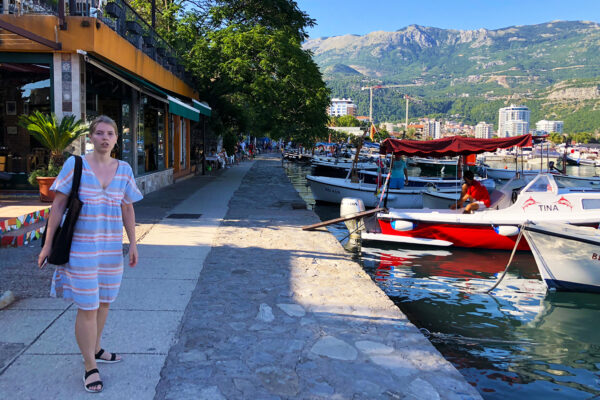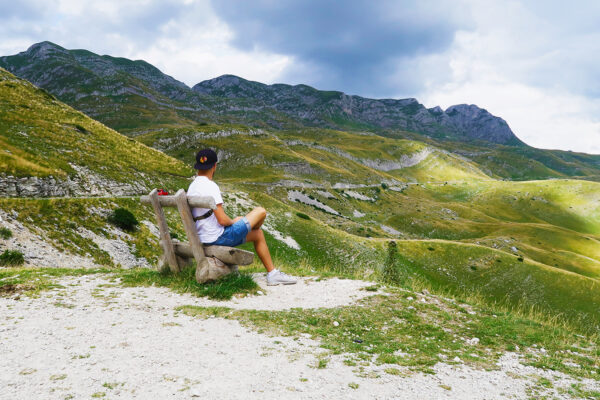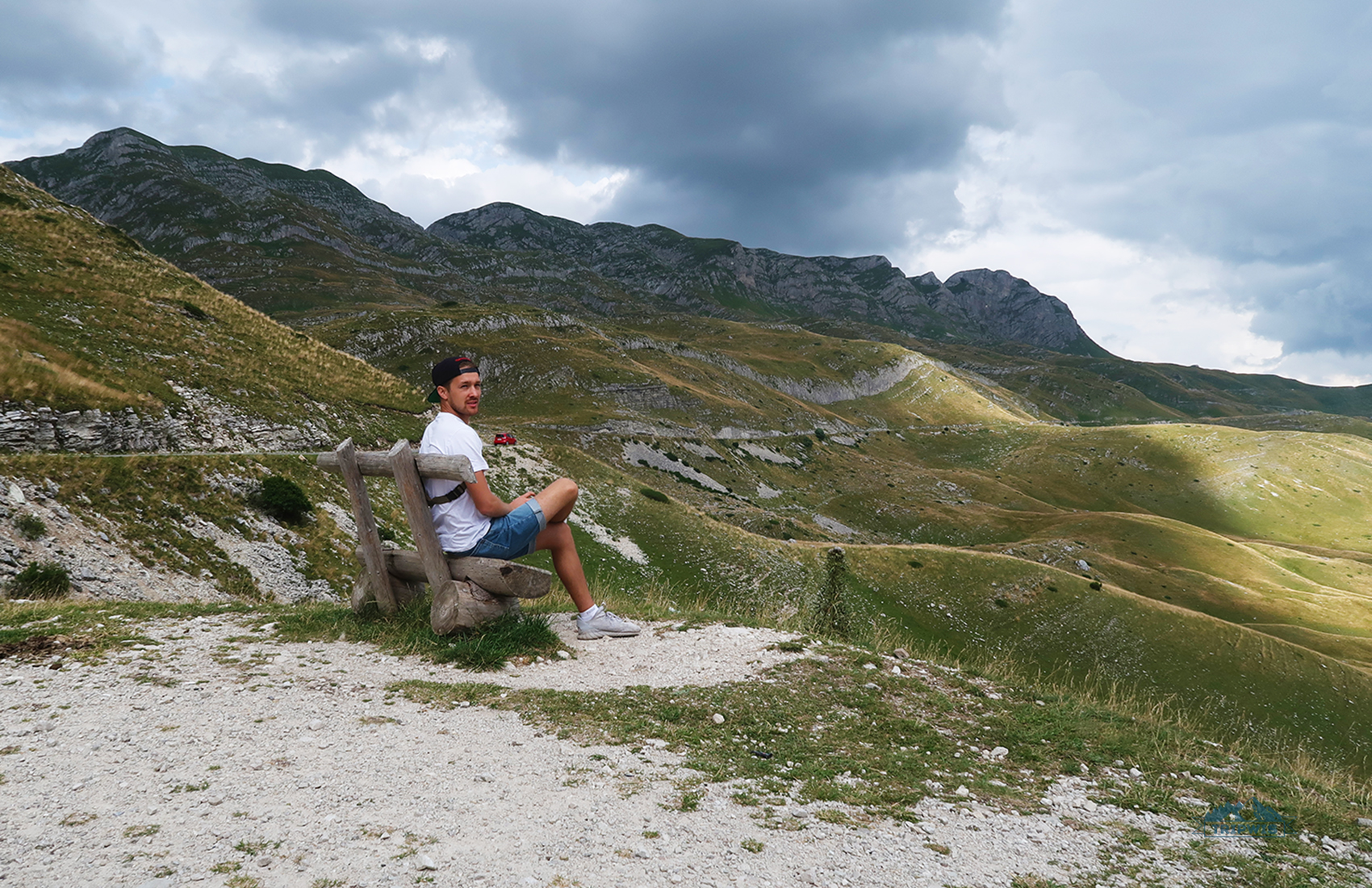
So, you want to rent a car in Montenegro. Chances are, it’s your first time in this country. Or, at least, your first time renting a car here.
As someone who has lived in Montenegro for over a year now, I can say that hiring a vehicle is a fairly straight-forward process, with its set of pitfalls, of course. I had to rent a car almost every 2–3 weeks for different reasons in our first year here, and I believe I’m a PRO rental client now.
Here are all the things to know before you rent a car in Montenegro. We’ll cover the basics first and go through the process step-by-step next, so you can get the most out of your road trip.
Article contents
- Is it a good idea to rent a car in Montenegro?
- Plan your trip ahead
- Step 1 — choose the service
- Step 2 — choose your ride
- How much does it cost to rent a car in Montenegro?
- Step 3 — choose insurance and additional services
- Step 4 — get your ride
- Step 5 — hit the road
- Good luck with parking!
- The traffic police are your friends
- How to act if you get pulled over
- Some misconceptions
- Car rental FAQ
- Final thoughts
Is it a good idea to rent a car in Montenegro?

Yes, it is! From personal experience, I strongly believe that a car is a necessity here if you want to see more than 1–2 cities during your trip.
It’s not that I love rental cars so much… Most of them are bland and boring. However, for a tourist, there’s just no decent alternative.
- Public transport in Montenegro is not a good idea. It’s a bit outdated, a bit unpredictable, and covers just the major cities, missing most points of interest;
- A taxi is not an alternative. One short taxi ride can cost as much as a whole day of car rent, about €35;
- A bike is not even close to being a sensible option. Good luck pedaling it for hours on steep inclines and trying to pass through one of a million tunnels in Montenegro. It might be eco-friendly and cheap, but it’s far from being convenient. Delve into our guide to Montenegro for first-timers where we talk more about all essential things.
Private transfer might be a good idea if you have no license, but it’s not a real alternative. It’ll cost you significantly more down the line — you can use it for one or two trips most (Gettransfer.com is a tried-and-tested service that you could use if you choose this route).
It’s easy to hire a vehicle in Montenegro, it doesn’t cost much, and it’s a relatively straight-forward process with a minimal risk of surprises and pitfalls.
The pros of hiring a car in Montenegro:
+ Can go anywhere, any time
+ Relatively cheap gas (€1,6 per liter)
+ No time wasted on public transport
+ Costs less than a taxi
+ The roads are excellent
+ You can get a car rental in Montenegro with NO deposit and/or credit card (I’ll spill the name of the company!)
The cons of hiring a car in Montenegro:
— Parking might be an issue (paid parking lots are €1,5/hour)
— Local drivers are not easy to deal with if you have little or no experience behind the wheel.
For me, the benefits far outweigh the downsides, and if you have just 1–2 weeks to explore this stunning country — hiring a car is a no-brainer.
More accommodation options unlocked
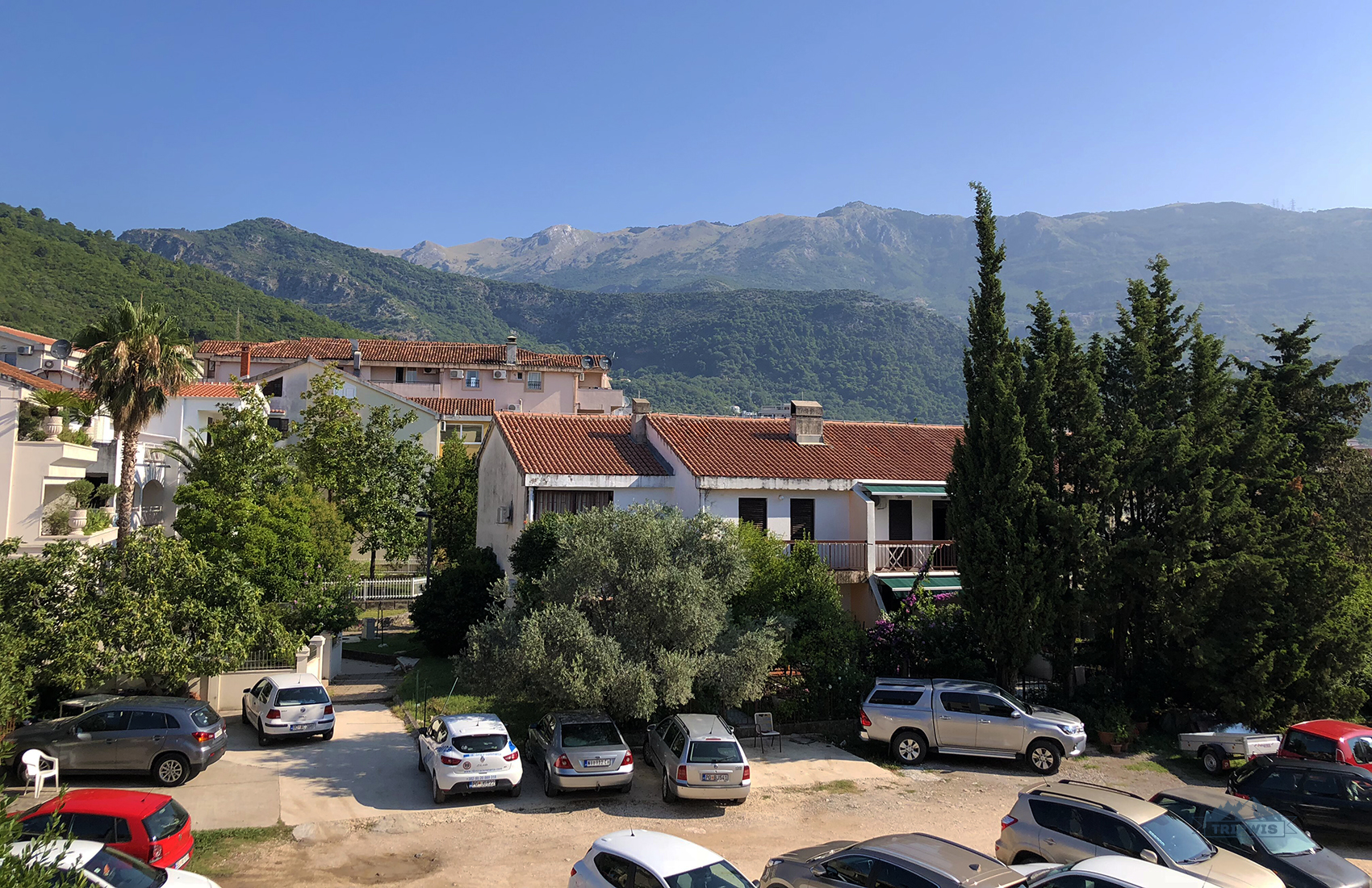
Reasons why you should rent a car in Montenegro go far beyond just the convenience of transportation. With a car, you’ve got more accommodation options. What could be a 30-minute walk to the nearest point of interest turns into a relaxed 5-minute ride.
Say, you want to stay in Kotor, but don’t want to pay extra. With a car, you can stay in Dobrota: It’s basically a part of Kotor that “flows” out of it along the bay. It would be far more affordable, with a 5-minute ride from your place to the central parking lot in Kotor. Without a car, you’d have to walk for 20–30 minutes, crossing the road several times and taking multiple stairs.
Same goes for all the cities along the Kotor Bay. You’ll find a cheaper room in Risan or Prcan, but the only way to get from these locations to Kotor or Budva is by a bus (once every few hours if you’re lucky and it’s not packed).
- Also, you can stay up in the mountains! Convenience here is not just about proximity to the nearest market, it’s also about stairs and hills.
For example, in Budva, you can stay in the Vidikovac area. It’s on the mountain right above the Old Town, with insane views of the sea and the St. Nikola Island, but it’s exhausting to walk up there. With a car, it takes just a couple of minutes to get to your accommodation via Jadranski Put.
When it comes to particular hotels that we feel would be a good match for your next Montenegro getaway, we’ve compiled a few here (note that they are mostly aparthotels/studio complexes, since the areas mentioned are pretty remote to have a lot of chain hotels).
- Best remote hotels around Kotor:
— Apartments Popovic (Prcanj; from €50 a night)
— Apartments Residence Portofino (Prcanj; from €100 a night)
— Apartments Miramar (Dobrota; from €100 a night)
- Best remote hotels around Tivat:
— Apartments Iva (from €40 a night)
— Apartments Djurovic (from €50 per night)
— Olive tree apartments (from €100 a night)
- Top of the mountain hotels in Budva:
— Hotel Twelve by Aycon (from €100 a night)
— Vidikovac Marble House (from €110 a night)
Where to rent a car in Montenegro?

You can rent a car in Podgorica, Tivat, Budva, Kotor, Herceg Novi, Zabljak, and pretty much anywhere else. All the best car rentals in Montenegro are available online.
I prefer to rent online simply because I can filter out all the cars I don’t want (no manuals, old, with expensive cross-border fees, overpriced insurance) and choose the most cost-effective option. Offline, you’re limited to just what the place has at the moment.
And most importantly — booking online does not set any limitations. Say, you want to rent a car at an airport in Montenegro. You’ve got two options:
- Book it online — be it on Localrent or Rentalcars — and you’ll get the car delivered to the airport’s parking lot at a specified time;
- Go for an airport car rental on the spot when you arrive, and they’ll just walk you to your car in the same parking lot.
There’s literally no difference, except, possibly, the price: Airport car rental offices are not really that popular here and they typically cost a bit more.
Pro tip: Some companies provide only the “at the office” pick-up option when you book the car, but if you contact them directly via the number they provide in the voucher, they’ll deliver it straight to your hotel. Or, at least, will help you find a more convenient location nearby.
When to rent a car in Montenegro?
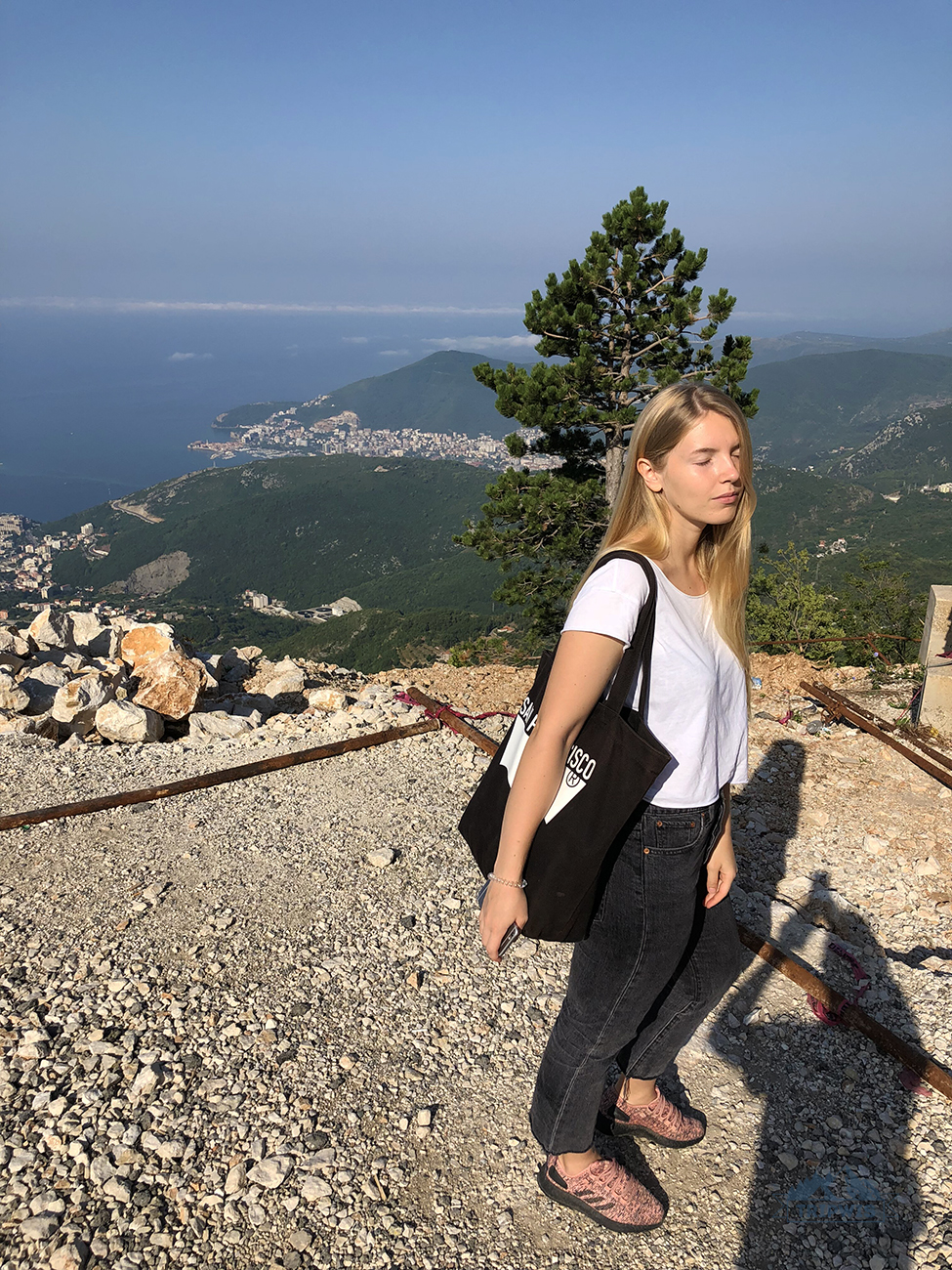 |
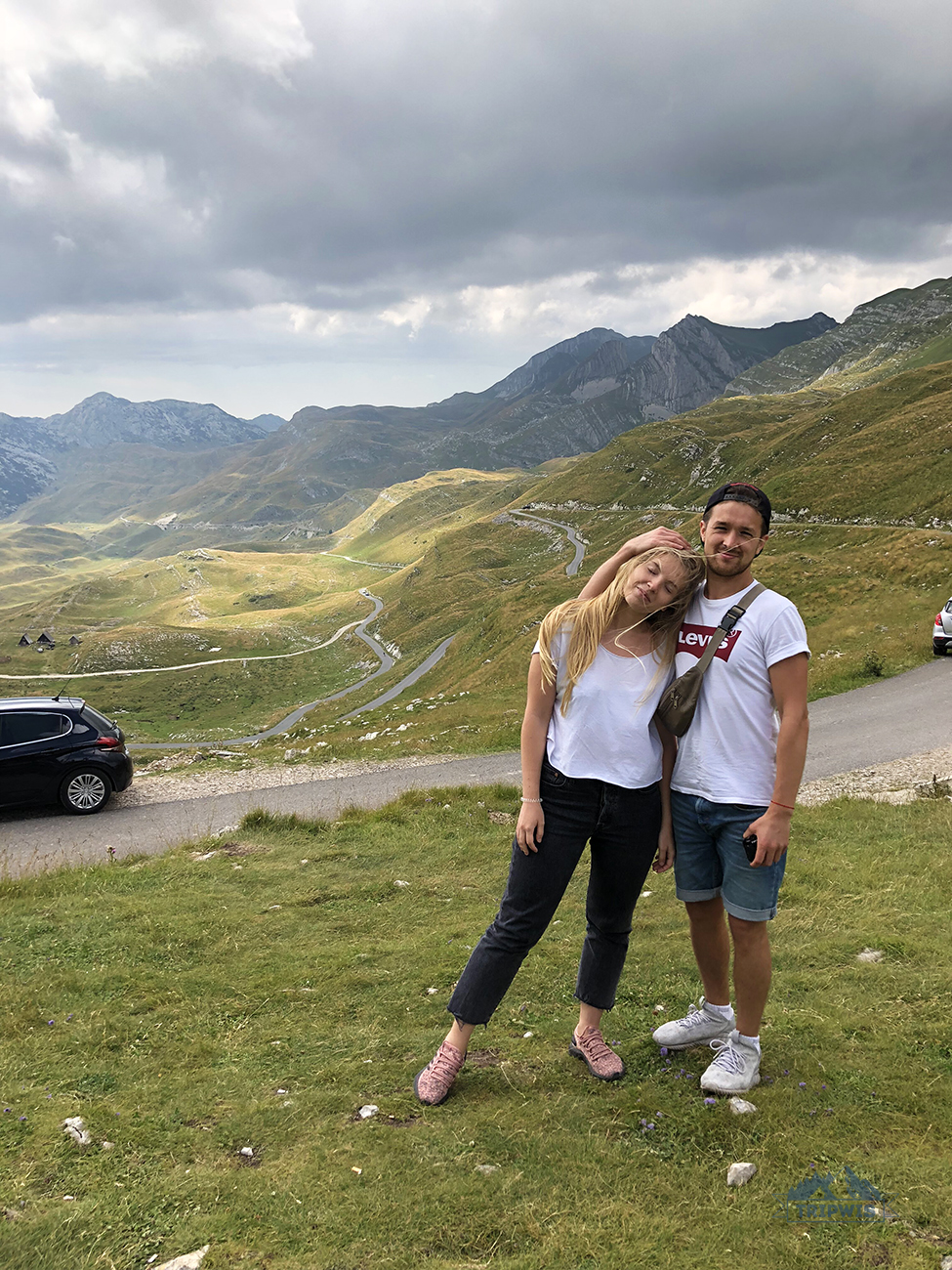 |
Booking in advance is always a good idea, but it’s not that crucial, unless you travel to Montenegro during the high season.
I prefer to rent a car in advance, but Localrent (the headliner of car rental services in Montenegro) didn’t fail me when I had to book a car in literally less than 24 hours before I needed it.
The rule of thumb is the same as with any other location: Book in advance when you can, the earlier — the better.
Plan your trip ahead

While renting a car “on the spot” or in a matter of days is not impossible in Montenegro, planning your trip in advance is still a good idea. This way, you:
- Get access to a wider variety of options;
- Can plan your route, fit in more places of interest and discover hidden gems you’d otherwise just pass by;
- Can download all the offline maps you need, make a playlist, and basically do anything to get the most out of the road trip.
Don’t forget to leave room for some unplanned activities and stops: There might be an interesting place behind every corner.
Now that you know the basics — let’s go through the process step by step. Here’s your guide to renting a car in Montenegro in 2024:
Step 1 — choose the service
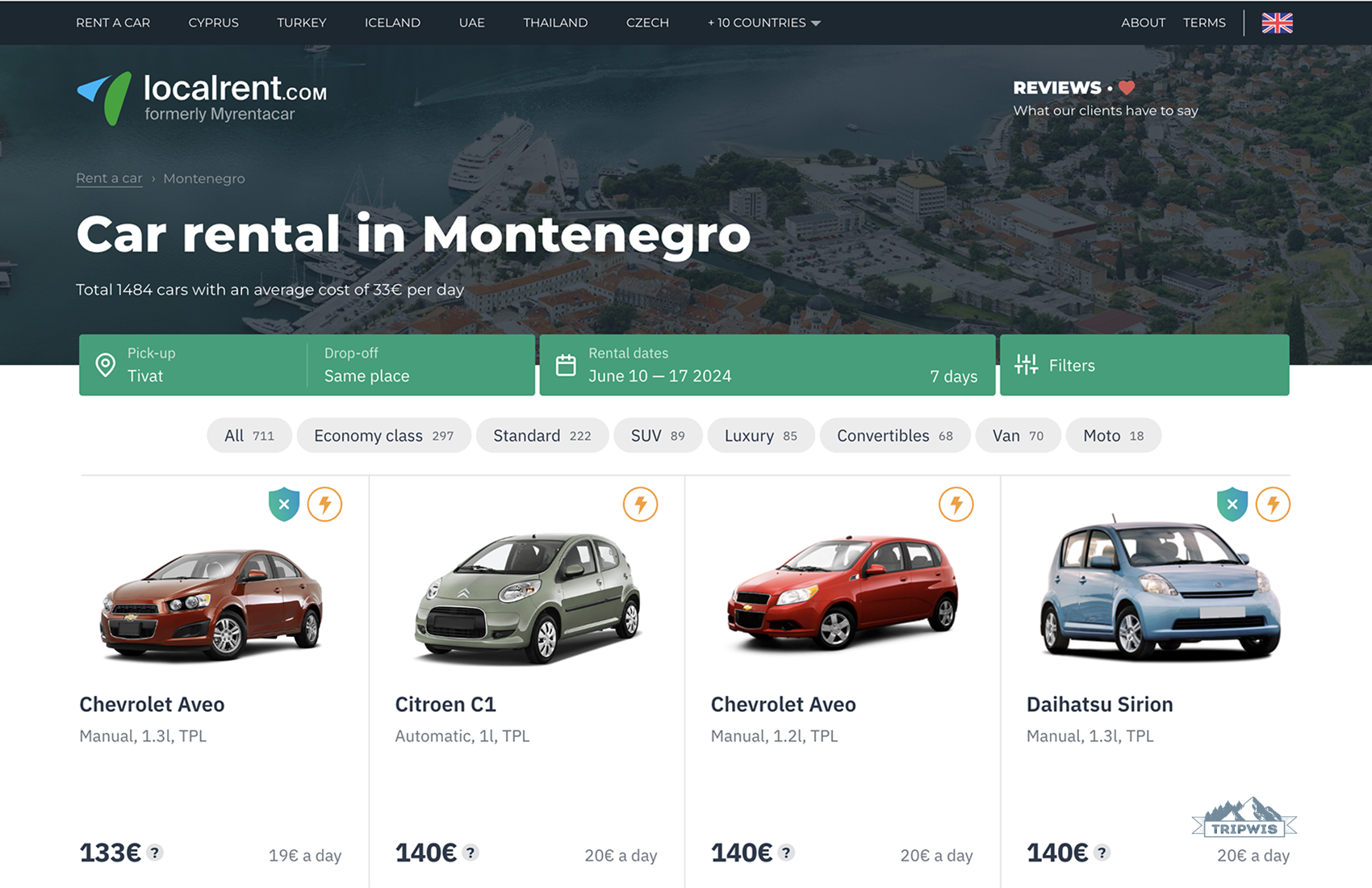
You’ve got three major options.
- Small car rental businesses. Many local small companies operate a “fleet” of 3,5 cars. Sometimes, quite literally, with 2–3 cars and a bike or two;
- Major international companies, like Avis or Hertz. They also present in Montenegro, though they might be more focused on bigger European countries and don’t necessarily have a large selection available;
- Aggregators, like:
They serve as an online storefront for all small local rental companies.
A small company is always a gamble: They might be more customer-oriented and provide a discount, but they also have less accountability. Major international rentals are barely present here, but the insane deposit (2x from all the alternatives) is an instant red flag for me. Of all the times I’ve had to rent a car in Montenegro, I used Localrent. They have a 1000+ fleet of cars here, and I had precisely zero issues with their services.
Aggregators vs international rental companies vs small local rentals
In my personal opinion, aggregators provide more flexibility and convenience than other options. However, here’s a comparison table so you can choose what suits you most:
| Small cheap car rentals | Aggregators like Localrent | Major rentals like Avis |
| Deposit €100–€200 | No deposit or around €100–€300 | Deposit €500+ |
| Average price / day is €40–€50 | Average price / day is €25–€300 | Average price / day is €50–€300 |
| Deposit in cash | Deposit in cash (with no-deposit options) | Deposit via credit card |
| Small variety of cars (5-20 options) | Large variety of cars (100+) | Medium variety of cars (10–50) |
| No fees upfront | Small fees upfront (10–15%) | Small fee + deposit upfront, you’ll need a valid credit card |
| Cash and card | Cash and card | Card only |
| Free cancellation | Free cancellation (24h) | Depends on the company |
| No mileage limits | No mileage limits | Could have mileage limits |
| Might have no cars available | Always have cars available | Always have cars available |
| Can’t drop-off in a different country | Drop-off depends on the car provider (rarely can drop off in a different country) | Can drop-off in a different country |
If it’s a road trip and you want to return your car in, say, Croatia, Avis and the like is probably a better option. However, if you want to explore the country and return the car at the same place where you’ve picked it up, Localrent is — in my opinion — a better option.
Also, it’s probably the only way to find a cheap car rental in Montenegro in advance with no insane upfront deposits, without visiting any of the offices here. At least from personal experience.
Step 2 — choose your ride
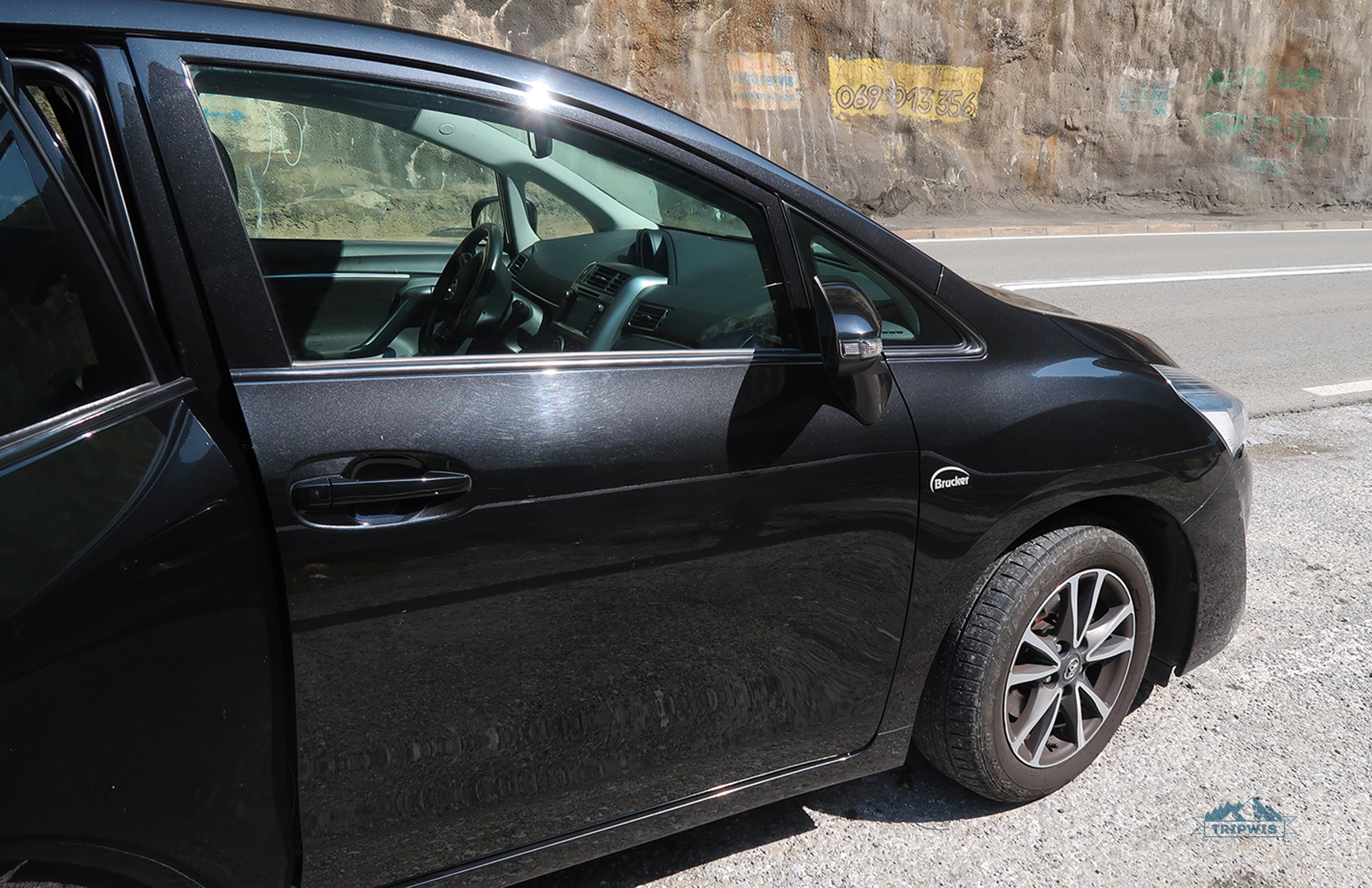
The car you’ll get totally depends on your preferences and your budget. I’ll just provide some suggestions to narrow down the scope:
- Don’t rent super-old compacts. Mazda 2’s, Hyundai i20’s feel too small and not safe enough for these roads, with engines barely capable of climbing an ordinary serpentine road;
- Don’t rent luxury & sports cars. With a deposit of over €2,000, there’s too much room for a scam. Also, there’s no way for these cars to properly shine here: Speeding is not a good idea and the limits are rather inflexible;
- Don’t rent a convertible unless it has a decent automatic roof. The climate in Montenegro is tricky, and no weather app is any good at predicting what’s waiting for you behind the next mountain. The last thing you need is driving out of a tunnel into heavy rain and watching your seats soak while you’re trying to figure out the manual roof mechanism that you see for the first time in your life.
If you want it to be simple and authentic, go for VW Golf. At least that’s what locals drive! You’ll see a lot of Golf and Golf-class cars here, and by “a lot” I mean “a LOT”. I’ve seen streets with parking lots consisting almost entirely of Golf’s and Polo’s.
Pro tip: Diesel cars are more popular here, there’s plenty of options with no markup, so it might be a good idea to go for diesel if you want to save on fuel.
What’s the price?
 |
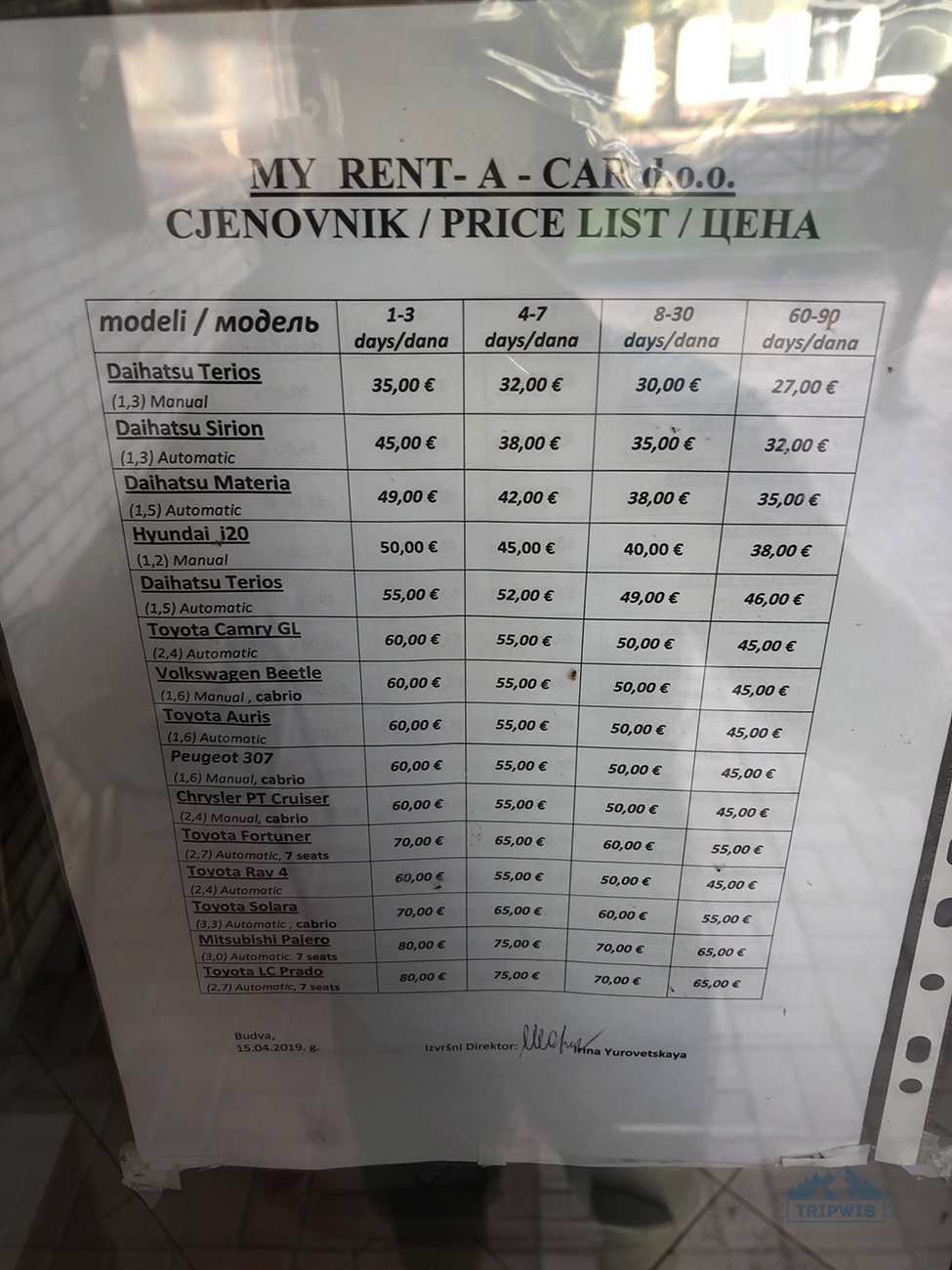 |
Car hire prices in Montenegro totally depend on the car you need. In general, though, it’s cheaper than in most of Europe.
If we simplify the whole market, here are the major segments you get:
⬆️Under €25–€35 — old compact cars. Among really cheap rental cars in Montenegro, the most common are Hyundai i20, Mazda 2, old KIA Ceed, old Opel Corsa, Peugeot 208, Smart.
⬆️€35–€45 — compact cars & old cars. A weird segment where you can get a tiny but new KIA Stonic, a “sportier” but rather old Opel Tigra, 10-year-old wagons like Ford Focus SW, or a fresh Renault Megane.
⬆️€45–€55 — a wider variety of budget options. Here you can rent a Mini, budget cabrios (think Peugeot 207 or Renault Megane CC), cheaper 4×4’s (like Suzuki Grand Vitara), and more recent compacts (like 2021’s Mazda 3 or 2018’s Fiat 500 C).
⬆️€55–€70 — is where all the most cost-effective options are. From this price point and upwards, you get your typical rental car landscape. Peugeot 301 (the most basic sedan ever), Skoda Yeti, Citroen C4, an occasional small BMW, 7-seaters like VW Touran or Chevrolet Orlando, cabrios like Mini Cooper One.
⬆️€70–€100 — new cars, bigger and quirkier options. In this segment, you can get something sportier, something newer, and something a little more capable. Think Audi A6, A4 and A3, late-model VW Golf or Golf Sportsvan, Skoda like Karoq or Kodiaq, well-spec’d Passat SW wagon, Renault Espace and Grand Scenic. Of all cars, you can rent a Chrysler PT Cruiser cabrio here and Toyota MR2 Spyder, both quite rare and unusual for the rental market.
⬆️€120+ and Upwards — whatever it is, you can get it starting from this range. Mercedes, BMW, Audi, convertibles and full-sized SUV’s, sporty rides like BMW Z4. The price slowly climbs up to €200–€300 per day and skyrockets in the end up to almost €1,700 for a blacked-out 2023 Mercedes G-Wagon.
The rental car market in Montenegro is almost entirely European-made, with Japanese cars taking a portion of the budget segment. An occasional Chevrolet or a Dodge is almost guaranteed to be outdated, and with these gas prices (€1,6 per liter which is relatively cheap but not THAT cheap), you don’t want it anyway.
All the cars I’ve rented in Montenegro
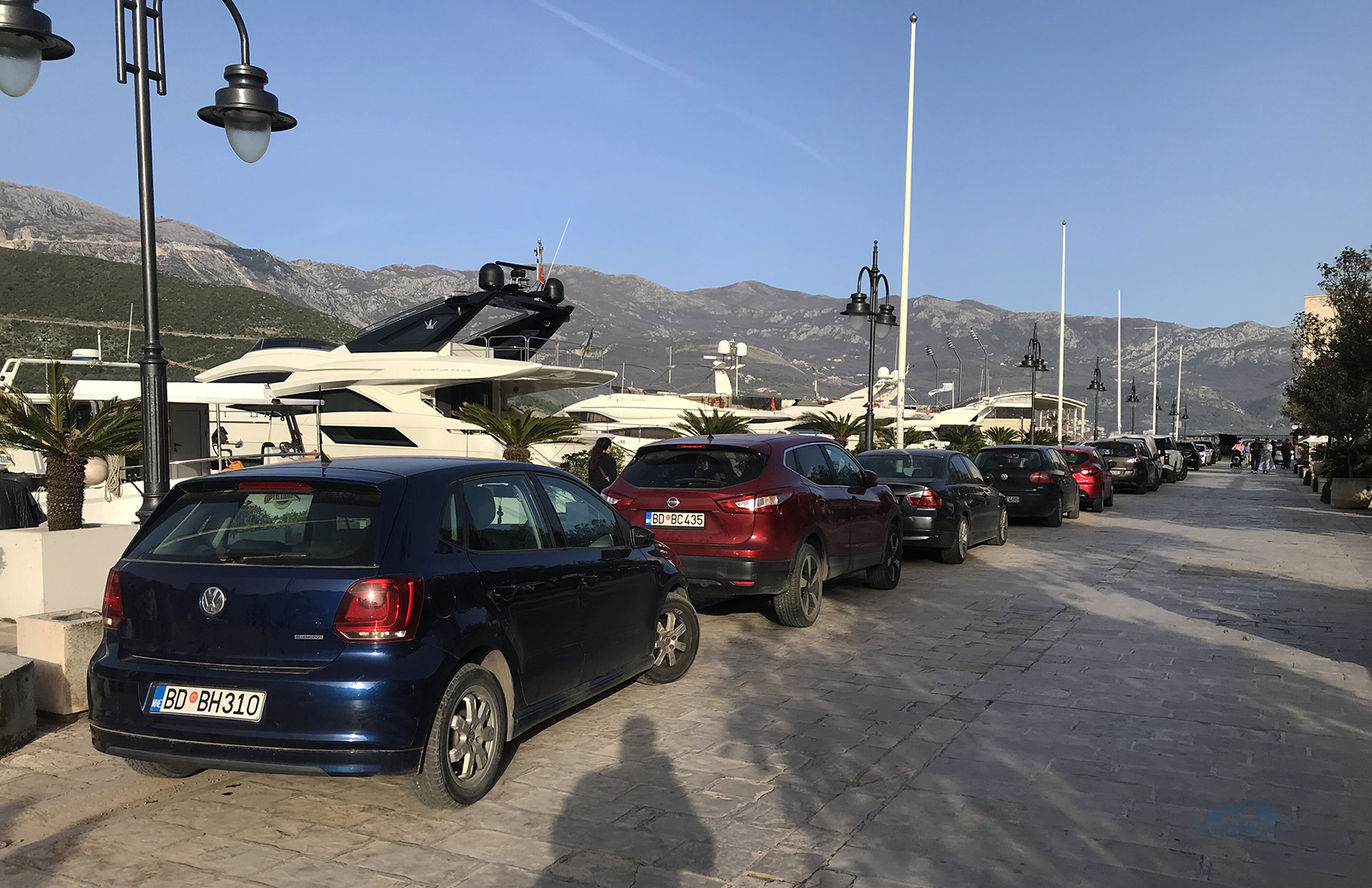
Here’s a short list of all the cars I rented in Montenegro in the last year, with some thoughts on them:
- Hyundai i20 and i30 — budget-friendly way to get from point A to point B, but not capable enough for the mountains;
- Renault Captur — OK-ish budget-friendly option, used most of the time, rented 3 different Capturs and was pretty satisfied with all of them!
- Toyota CH-R — great smart hybrid option with low fuel expenses;
- VW Polo — basic and simple, doesn’t stand out, does what it has to;
- Golf 7th gen — sportier than most other options, an all-around good practical choice;
- Toyota Rav4 — probably the best one so far, a tiny SUV that doesn’t care what kind of slope you want to climb, it just does;
- Chrysler PT Cruiser Cabrio — weird, quirky and slow, rented it once out of curiosity.
The CH-R and the Rav-4 provided the best experience, though I definitely spent too much on fuel with Rav-4, despite it being a diesel. It was the most capable, the most convenient car for these roads, and I just can’t get back to Hyundai i20 now after it…
Step 3 — choose insurance and additional services

Here’s a little glimpse behind the scenes again: Localrent is not the service provider, they act as a directory. A convenient way to get all local small rental companies under one roof, within one searchable list.
Small rental business owners fill in the cars’ provided services themselves. If they want to charge for anything, they just need to put the number into the form. And needless to say, all of them have a different understanding of “optional”.
Choose options slowly
Some will charge extra for:
- Crossborder transit;
- Winter tires;
- Early or late pick-up and drop-off;
- Child safety seat (sometimes multiple options);
- Second driver;
- Wi-fi in the car;
- Obviously, insurance.
Each rental company has their own price on these things.
On the same website, with the same filters applied, you might find two similar model cars, one with these options included in the daily rate, and another — with each for €10–€20 extra.
Practical advice here is simple: Just spend a bit more time choosing the car. You’ll eventually find the most cost-effective option.
Pro tip: Whether your car has a manual gearbox or automatic transmission affects the price. Manuals cost less. Automatic gearbox is infinitely more convenient in the summer, when everything turns into a massive traffic jam.
Choose insurance wisely
“Wisely” here stands for maxing it out, everything but the “car theft protection” checkmark.
There are three main plans:
- TPL — Third Party Liability
You get TPL (third-party liability) for free when you’re renting a car in Montenegro. In simple terms, TPL means that your insurance company will pay for the damage you cause to any other car.
- CDW — Collision Damage Waiver
With this option, if you damage the car — you lose your deposit, but the rest is covered by the insurance company. Note that basic CDW covers just the body of the car, though, it’s for dents and scratches. If you damage the tires, somehow manage to blow up the engine, smash your window, break your lights or mirrors — it’s not covered by CDW.
- SCDW — Super Collision Damage Waiver
Basically, an all-inclusive option, CDW plus damage to tires, lights, engine, and any other part of the car (though it may vary, depending on the insurance company).
It’s not your license to damage the car, but if you accidentally do, in any way — you’re covered and it’s not your problem. Most of the time, you even get your deposit back, though it depends on the rental company.
Pro tip: The fourth feature that most rentals offer is “theft protection”, but the probability of that said theft actually happening is miniscule. Unless you rent a luxury car and leave it open for the whole day, you’re good to go without theft protection.
So, why should you go for SCDW?
Just to name a few reasons:
🔹The roads are unpredictable. It won’t really be your fault if a stone suddenly falls right in front of your car and damages the front bumper, but it will be your fault on paper, and you’ll pay for it out of pocket;
🔹Local drivers are always in a hurry. The bigger the car — the bigger the chance that its driver will be aggressive on the road;
🔹Locals don’t care about dents, but your rental company does. So, if someone scratches you in the parking lot, they’ll just leave the scene like it’s no big deal. And you’ll have to pay for the damage;
🔹There are no dash cams or any other type of surveillance used in Montenegro. In case anything happens — it’ll be your word against the word of the local driver. And they, at least, know the language.
Personally, I prefer to get SCDW even though I have more than enough experience on these roads. If it’s not my car, I don’t want to care about fixing it or pay for any repairs. The peace of mind is worth it, but the final decision is, of course, up to you.
Here’s a little advantage of Localrent comes into play: They don’t make money out of selling insurance options. They offer the plans that the rental companies provide them with — so, no unexpected conversations in the rental office like “I don’t know anything about insurance that you’ve added, we only have our own insurance plan.”
Step 4 — get your ride
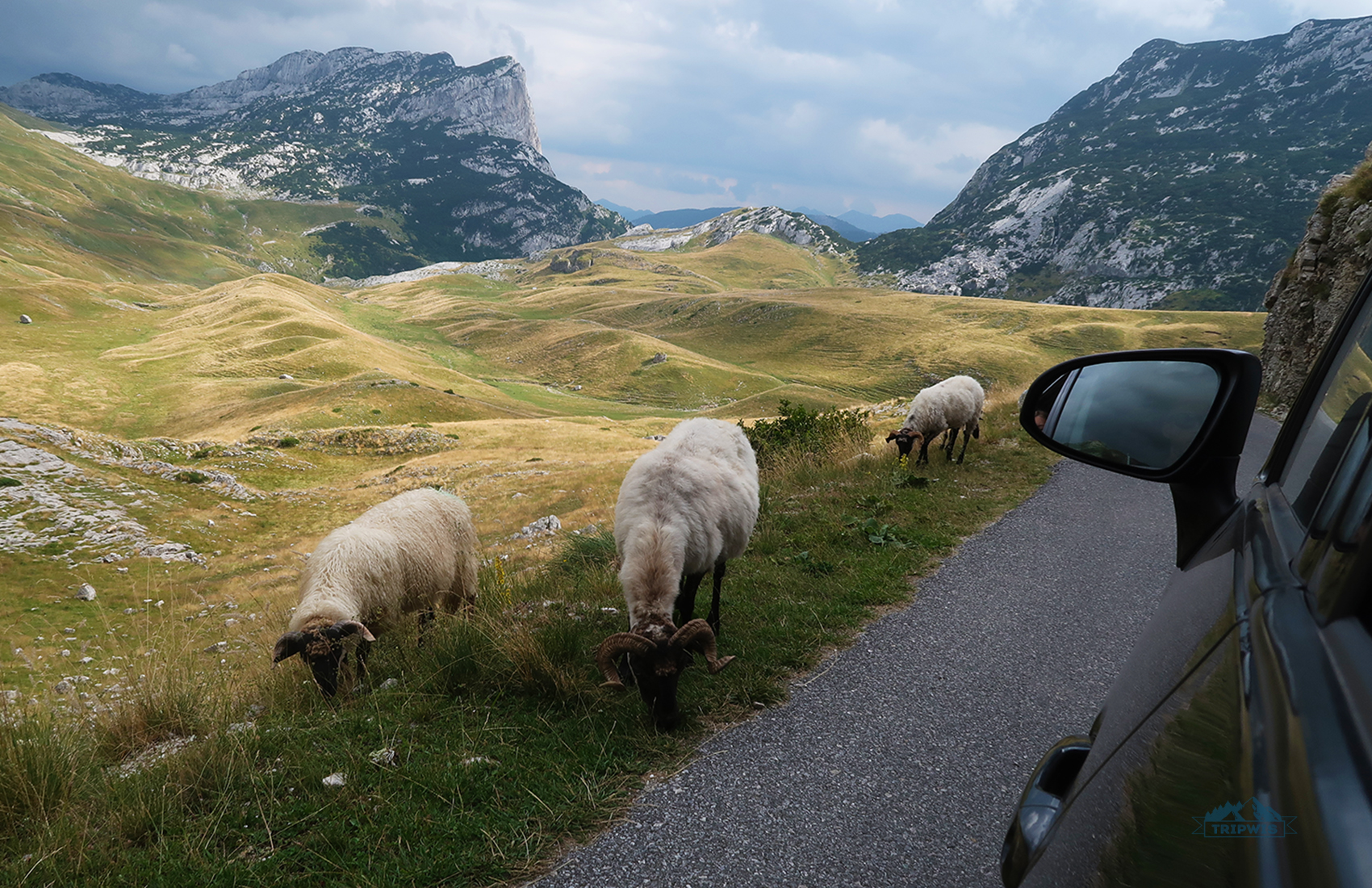
When you choose the car and book your pick-up time, you’ll get the voucher in your inbox. Most of the time, the manager of the rental company will contact you (WhatsApp or Viber are two preferred options) beforehand. So, when you arrive at the spot, they’ll be waiting for you.
On hand, you’ll need:
- Your international driver’s license;
- Your ID;
- Cash for the car;
- And cash/card for the deposit.
Deposit is rarely below €100, but even a sum more than that shouldn’t alarm you too much: Of all times that I’ve rented a car, with €200–€300 as a deposit, I’ve never had any issues getting it back.
Things to do

When you arrive on the scene, while the manager fills out your papers, you’ll have a few spare minutes. You can use this time effectively as well:
— Make a video of the car. Don’t just take pics of the existing damage, make a full walk-around video. Zoom in on all the dents and scratches, any sort of damage inside and outside, but pay attention to undamaged areas as well. In case the manager forgets to mark any dents in the form, you’ll be able to prove that it’s their oversight when you return the car.
— Check the gas level. You’re supposed to return the car with the same level as you get from the start. A photo or a short video will help you remember it correctly.
— Check the trunk and the wheels. You’re supposed to have: Snow chains (only if we’re talking about winter, and you should have them in the trunk, not on the wheels), Warning Triangle (usually foldable and tucked somewhere in the trunk), first-aid kit, winter tires (mandatory in the mountains from October 15 to April 1).
You’re almost guaranteed to have it all in your vehicle: The rental company, as a business, is responsible for the car condition. They’ll have to pay insane fines if you get “caught” by police in the mountains on summer tires.
Get to know your vehicle
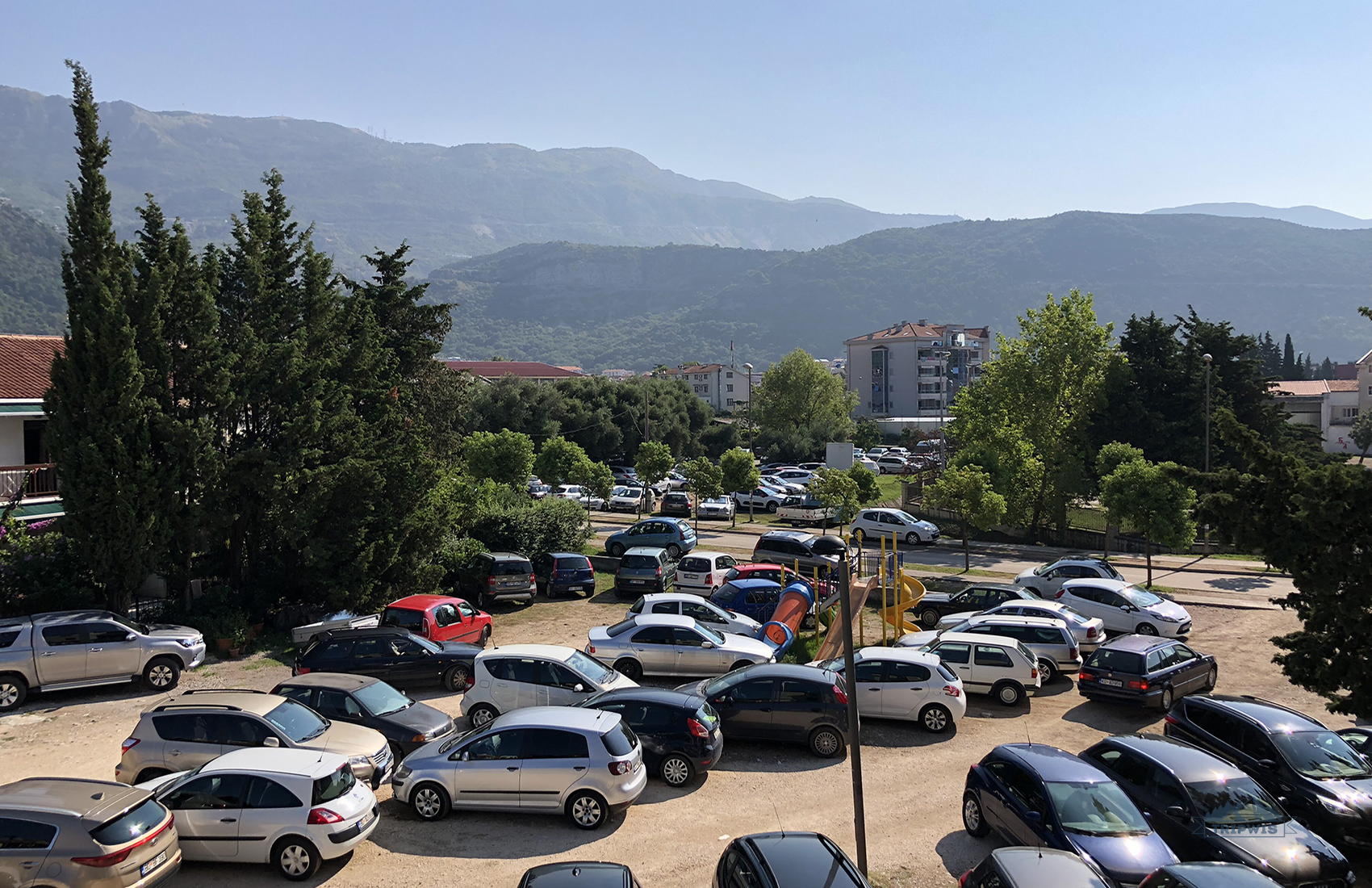
Ask the managers about Bluetooth settings! If at least one list of things to know before you rent a car in Montenegro had this point covered, oh, how much of my time would be saved.
Most new cars come with CarPlay, but it’s not the case with older vehicles. Connecting your phone to turn on some music is not always intuitive, and you don’t want to waste time on learning how some sketchy cigarette lighter 12v Bluetooth dongle works.
In addition to music, make sure you know how to:
- Turn the lights on and off
- Adjust and fold the mirrors
- Lock and unlock the car (might get tricky with newer keyless cars)
- Set up the AC
- Open the fuel door
- Fuel it up
Just ask the manager “Is there anything I need to know about this particular car?”, and chances are, there will be some tricky details. The tips might be obvious, but also counter-intuitive. Especially with French cars.
I’ve learned it the hard way: The very first Renault Captur I’ve hired had an issue with a fuel level gauge, so no matter how much diesel I pumped into the car, it looked like the level remained the same. I ended up paying more for gas than I did for the car itself.
The rental company was kind enough to compensate for it and explain that the gauge doesn’t work if you don’t follow some specific ritual with the engine and the lock before fueling up. Still, I could’ve asked, and they’d warn me about it.
Pro tip: Fuel up in advance. Get a full tank if you head towards the mountains: The nearest gas station might be 200 kilometers away in some remote spot. There might be little to no traffic to help you out, and tow trucks (aka Autoslep) are quite expensive.
Step 5 — hit the road
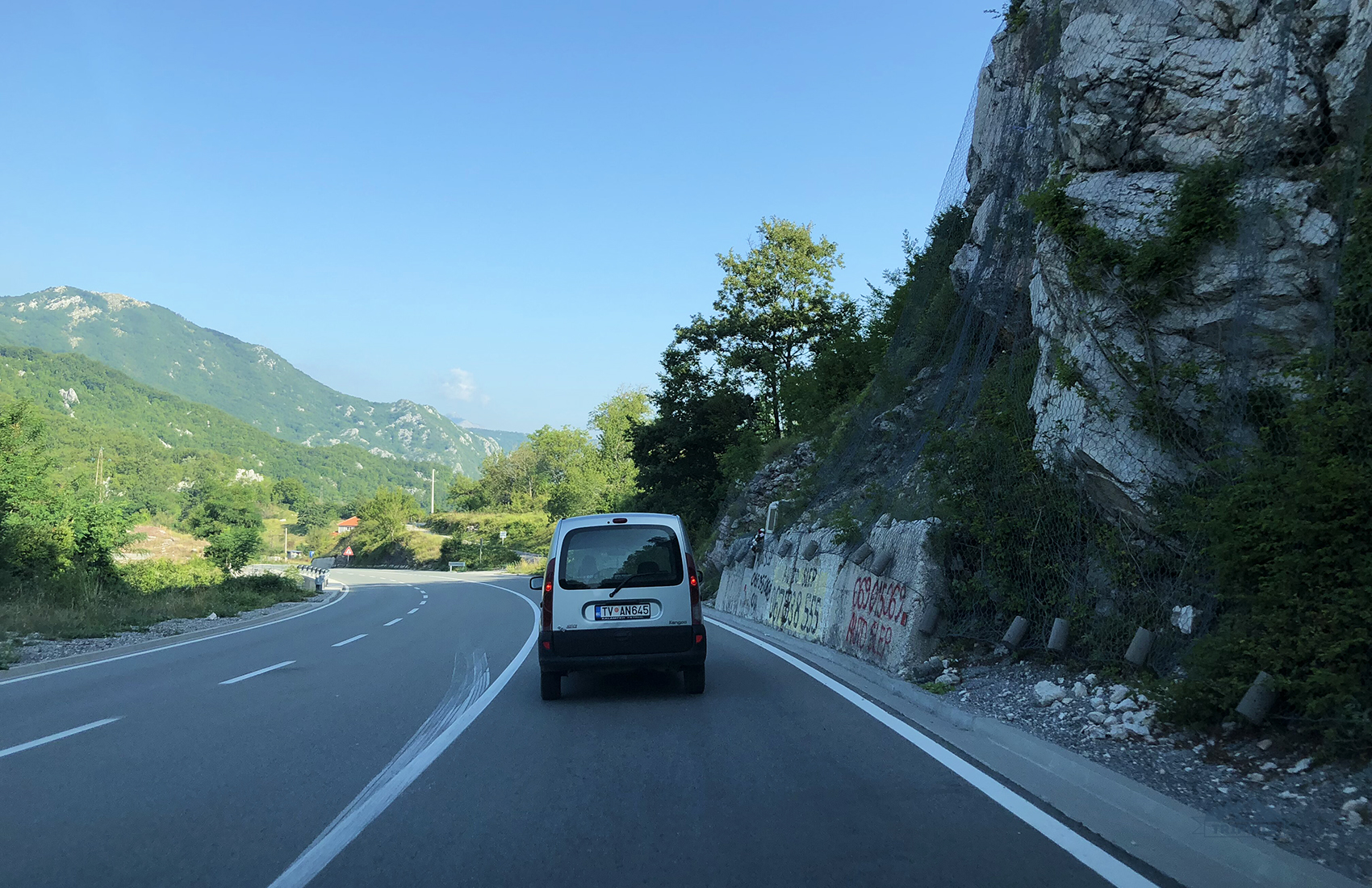
It’s easy to rent a car here, but driving in Montenegro is a whole different thing, with both good and bad things to know.
I’ve covered probably over 5–6 thousand kilometers on these roads now, and here’s what you should be aware of:
The roads are nice…
Not just the country’s highways are nice, as most other blogs say, but most serpentines as well.
Almost all local roads went through a major renovation process in the last two decades, and it shows.
The Benefits:
+ No potholes
+ No “missing” chunks of pavement
+ No unfinished road works or uneven spots that’d make your car’s suspension suffer.
It’s not all sunshine and roses, though.
The Downsides:
— No lights on most roads at night (outside of cities and major highways)
— Little room for maneuvers. Wherever you go, you’ll have just one lane for yourself. Even the Jadranski Put (the Mediterranean Way), one of coastline’s major highways, is a single-lane road.
In terms of road signs and safety, Montenegro is OK: If there’s a dangerous spot, they’ll warn you about it in 10 different ways. Serpentine roads are well-maintained, so there are no “death roads” like in India or China.
Pro tip: There are no toll roads in Montenegro and it’s free to drive on every highway, with just two exceptions: The Sozina Tunnel (between Bar and Podgorica, €2,5) and the ferry between Kamenari and Lepetane (€4,5 for a small car).
…but slippery (even when dry)
One interesting thing to keep in mind about roads in Montenegro, is that they — somehow — managed to choose a technology that makes the surface slippery as hell. It’s not that bad on a sunny day when the roads are dry but it gets infinitely worse in the rain.
When it rains, you’ve got to slow down. It’s super-easy to lose control (especially if you’re in a front-wheel drive vehicle). It happened to me once at about 50 km/h. Luckily, the road was in the middle of a field, not on a mountain, and I managed to stop quickly on wet asphalt, all thanks to ABS.
The speed limit is unpredictable
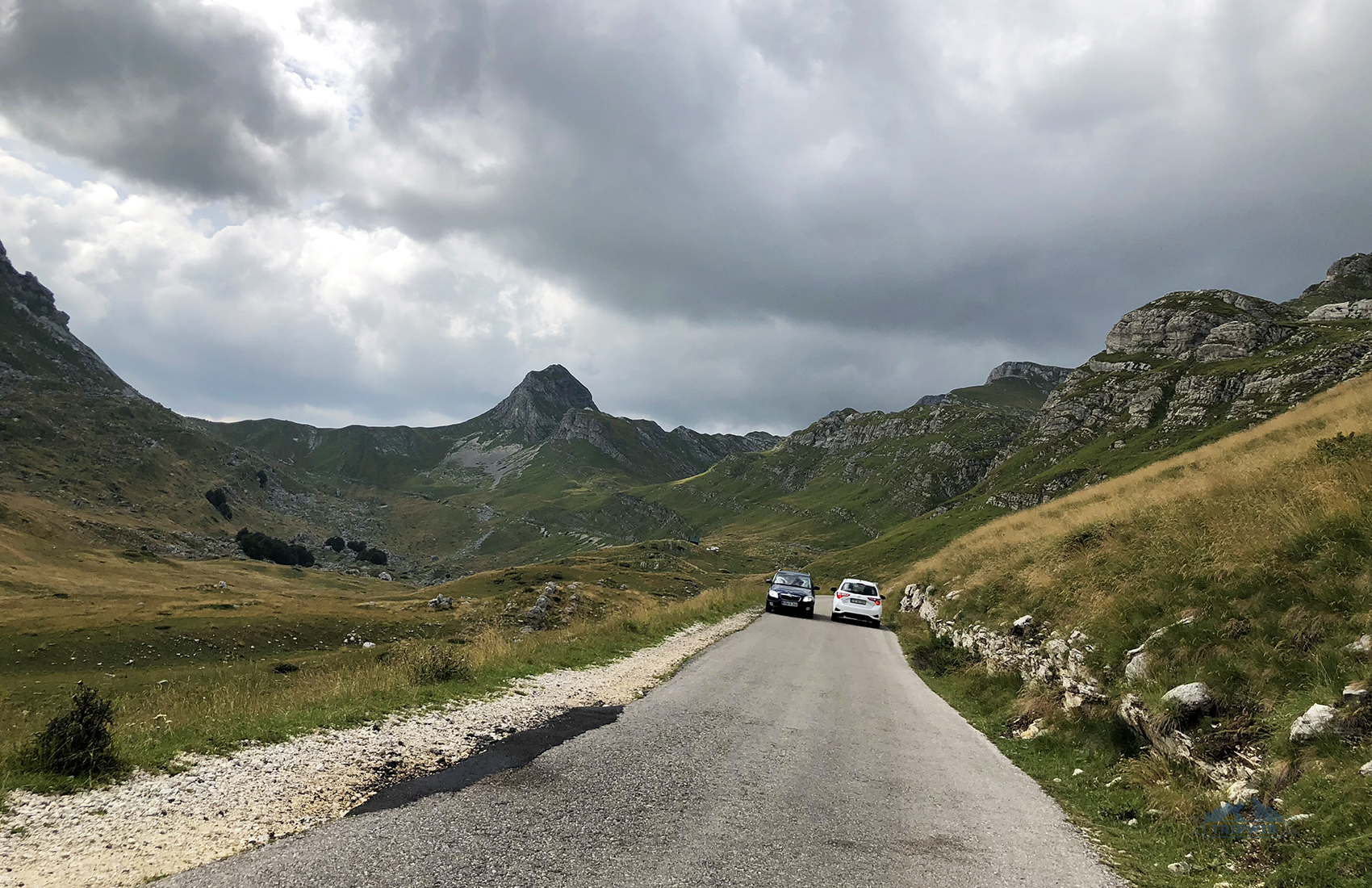
Despite many other blogs trying to simplify it, the speed limit here is inconsistent, to say the least.
You’ll see speed limit signs changing frequently:
🔹20 km/h (12 MPH) in school zones to 40 and 60 in cities
🔹30 km/h (18 MPH) — in front of blind turns and on especially dangerous parts of the road
🔹60, 70, 80 km/h (49 MPH) — outside major cities
🔹Up to 100 km/h (62 MPH) — on highways, rarely.
It’s not uncommon for 80 km/h limit to turn into 30, and vice versa. Just pay attention to the signs.
Don’t break the rules
For locals, traffic laws are optional. At least they believe so.
You’ll see a lot of opposite lane takeovers, chaotic turn-arounds, and running the red light. The residents know what they’re doing and can get away with it: They drink coffee with the local traffic police every Wednesday and drive on these streets since Tito was around.
For you, as a tourist, the traffic laws are carved in stone. Simply because you’re new to these roads. Keep in mind the following rules:
- Drive on the right side of the road (though locals tend to drive in the middle when there’s nobody around)
- Take over only when you see a sign that allows it or wait for the road to give you a takeover lane
- Keep your headlights on (even during the day)
- Avoid drinking alcohol (it’s not just reckless, it’s simply stupid on these serpentines. Even though it’s legally allowed in moderation, you can’t have over .3% per mille of alcohol in your blood, which is basically a half of glass of wine)
- Keep your seatbelt fastened (at all times, even when you’re pulled over, it applies to your passengers as well)
There’s nothing special or unusual about traffic laws here, but you still have to keep them in mind.
It’s not NASCAR
I can’t stress this one enough: Do NOT speed on these roads. Especially in the mountains. It’s the most important one of all the things to know before you rent a car in Montenegro.
Here’s why: Locals have no respect for double solid lines. They like to drive with half of their car in the opposite lane and go for risky opposite lane takeovers like it’s nothing. Head-on collisions happen quite often here.
What’s behind the corner is unpredictable. It can be a massive boulder in the middle of the road, washed down with the latest rain. It can be a fox, a dog, a cat, or any other animal (we’ve seen turtles, lizards, snakes, hedgehogs), or even a 1981 Yugo doing 20 in an 80 zone. Literally anything. You NEED some time to stop. It might be an area close to a local farm, and you, at a speed of 80 km/h or more, will suddenly see a whole herd of cows, right in the middle of the road.
Given that the roads here are basically 80% blind turns, with slippery asphalt, it’s hard to overestimate the importance of driving carefully.
Good luck with parking!

You’ll need it: It’s utter chaos sometimes.
Realistically, you have just 4 options when it comes to parking in Montenegro:
- Unlawful and free, but ethical: Parking on the side of the road, in front of supermarkets. Not recommended, you might get towed.
- Unlawful and free, and also unethical: Parking in the middle of the road, on pedestrian crossings (favorite spot for locals). Strongly not recommended, though you’ll see it often.
- Paid option one — designated parking lots on the side of the road. Parking meters take cash and cost less than €1 per hour, but you’ll barely find an open spot: Almost all parking lots of this kind are packed even during the winter.
- Paid option two — designated closed paid parking lots. That’s where your car will spend most of its time in bigger cities. Prices start with €1,5/hour, and you’ve got to be lucky to find a spot during the high season.
Almost all cities have a huge sign with the number of spots available in major parking lots, updated live.
Pro tip: If you rent a car in Tivat, look for private parking signs. These usually cost less than the “official” ones. And if you rent a car in Budva — you’re pretty much limited to just two major parking lots near Stari Grad.
The traffic police are your friends
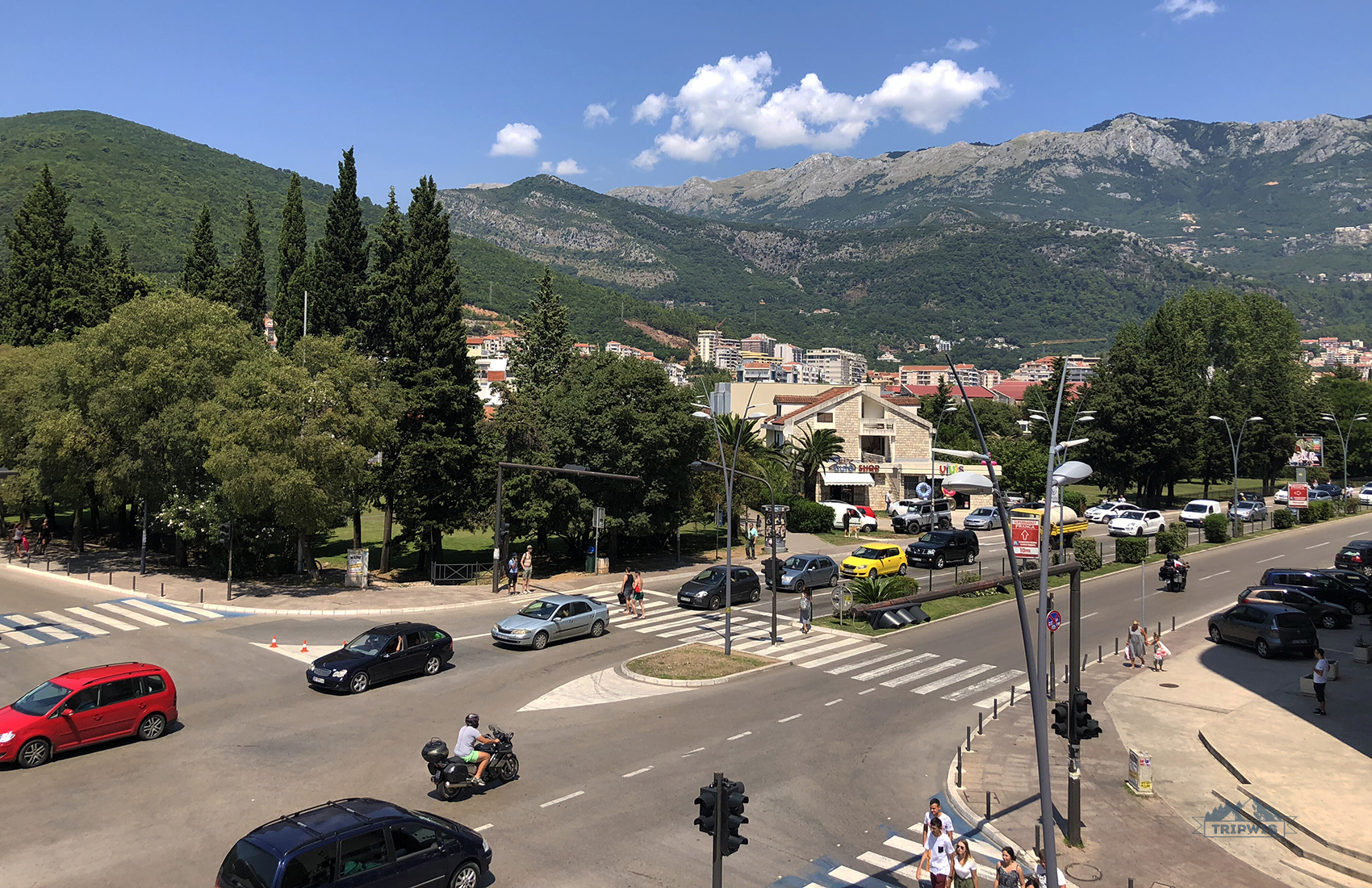
The traffic police here are a rare sight, but they’re genuinely friendly and competent. You can stop and ask for directions, anything service- or roads-related, and they’ll do their best to help.
- But here’s a thing I haven’t seen in any other guide on renting a car in Montenegro: As your friends, they can pull some friendly shenanigans.
Be respectful and polite regardless of the circumstances, but keep in mind that those circumstances — oh, they can be different.
Just to name a few favorite games that bored local traffic police officers like to play:
Hide and seek
Just as in many other countries, it’s not uncommon for them to hide in the bushes on the side of the road, behind some blind corner, or at the end of a tunnel.
Undercover policing
Say, you’re driving exactly the speed limit on a highway between Podgorica and Niksic. Behind you, out of nowhere, appears a basic gray Renault, all tinted (which is illegal here). It doesn’t try to overtake you or signal anything, just follows you closely, bumper to bumper, making you anxious.
What would you do?
- If you’re a short-tempered teenager in a nice car your dad just bought you, you’ll floor it angrily;
- If you’re a tourist with zero knowledge of local “games”, you’ll try to pull over (in a place where it’s prohibited), or go above the limit to make the distance safer.
The moment you’re provoked, that “ordinary” car overtakes you, cuts right in front, and turns on the hidden blue and red signal.
You’ll soon learn that their windows are tinted for a reason: You’re not supposed to see that police uniform on the driver before you get “caught”. It’s called “undercover policing” and it was initially a good thing, catching unruly drivers, delusional about their driving skills.
Nowadays, it’s Montenegro’s most sophisticated tourist trap. Quite literally: All locals know these cars and won’t react. There’s even a picture of them all together that locals share in Facebook groups. The police has a total of 8 or 10 “civil” vehicles, specifically modified for this kind of work.
The right thing to do when you see that undercover police car is behind you? Just as the meme goes: Ignore it and it will go away. They prey on short-tempered and anxious people. If you just keep driving within the speed limit and don’t do anything stupid, you’re not their prey.
How to act if you get pulled over
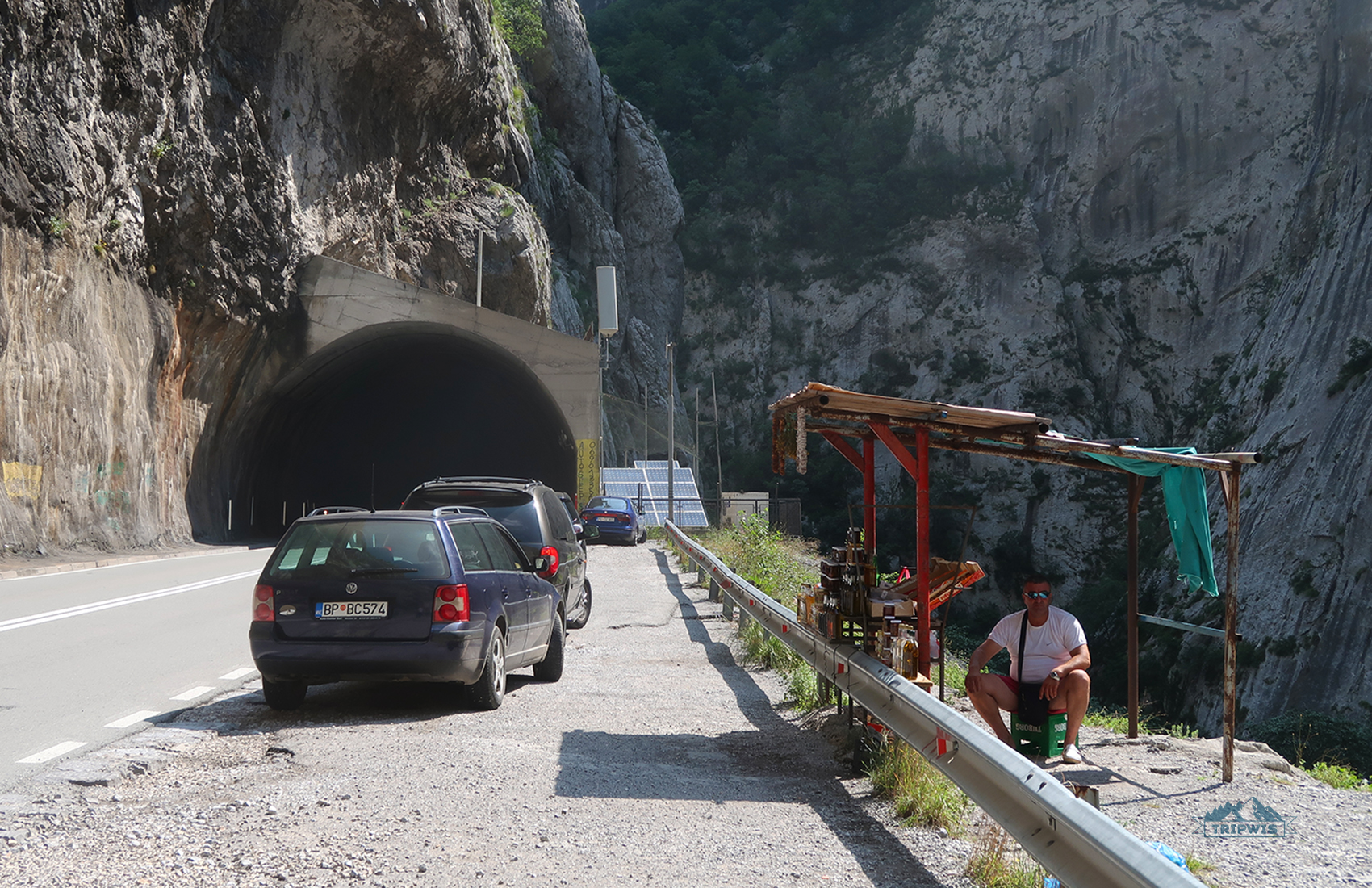
Whether you’re pulled over lawfully or (in your mind) not, be polite and calm.
- First of all, relax: They’re not taking your vehicle, stranding you in the middle of nowhere. Worst case scenario, they’ll just take your license.
- Don’t leave the car: It’s a no-no here. Wait for them to come to your window.
- Don’t unfasten your seatbelt: They’ll be 100% sure you were driving like that (which is illegal), and nothing in this world will convince them otherwise. Just provide your driving license when they come to your window.
It truly is important: Be polite. It’s always a good idea, especially with traffic police. It’s a respected trade here.
What’s the worst that can happen?
They’ll take your license. You’ll get a temporary replacement “license” with an expiration date, signed by the officer, so you can get home, and it won’t count as driving with no license. You won’t get your license back until you pay a fine at the nearest post office.
Fines in Montenegro are tolerable: Expect to pay €30 to €300, depending on the violation.
- If you notice obvious hints that they want you to pay “the fine” here and now, in cash, act according to the circumstances. It might be a good idea to pretend that you don’t understand a thing (you’re a tourist, after all, they know you’re not their best “client”) and insist on paying the official fine at the post office.
Some misconceptions

Now, to sum things up — let’s talk about all the weird advice I’ve seen online while doing research for this guide. The Internet is full of utter nonsense on this topic.
Here are some of the most blatantly wrong examples:
“Rent a small car because it’s easier to navigate serpentines and parking lots”
It’s all fun and games until you have to climb a 15% slope upwards (which is rather common). Good luck flooring it all the way to the top with a whole line of other cars behind you.
A mid-sized AWD is a much better option than compacts: Less awkward going upwards, more stability on slippery winding roads. And as for parking, you’ll pay for it anyway.
“Your car might get stolen”
If you suddenly can’t find your car where you left it, chances are, it got “stolen” by the police and it’s waiting for you in their parking lot, along with a fine for parking in a wrong spot.
Locals often leave their cars with their windows rolled half-way down to prevent the car from turning into an oven in the sun, since car theft is barely a thing here.
When everybody knows everybody, including rental company owners, what would thieves do with your car anyway? Risk getting jail time for a 10-year-old Renault? Even if car thieves exist here, they barely target rental cars.
It’s not Chicago or Milwaukee: Your rental KIA and its catalytic converter are both safe.
“Drive slower than the speed limit, the roads are dangerous”
Well, yes, the roads are just as dangerous as they are beautiful. But locals have their own understanding of the speed limit.
You ARE going to drive people crazy by driving precisely 60 in a 60 zone, especially on roads with blind corners, where overtaking is not an option. And I’m not even talking about driving slower than it’s allowed.
If you notice that your car is “the head” of a whole column of other cars, do everyone a favor: Pull over at the nearest suitable spot, let everyone pass, and go on at your comfortable speed.
You’re a tourist in a compact rental car, anxious about every turn, and they most likely live somewhere around, so they can navigate these roads blindfolded. And they’re in a hurry: Their coffee is getting cold.
Montenegro car rental FAQ
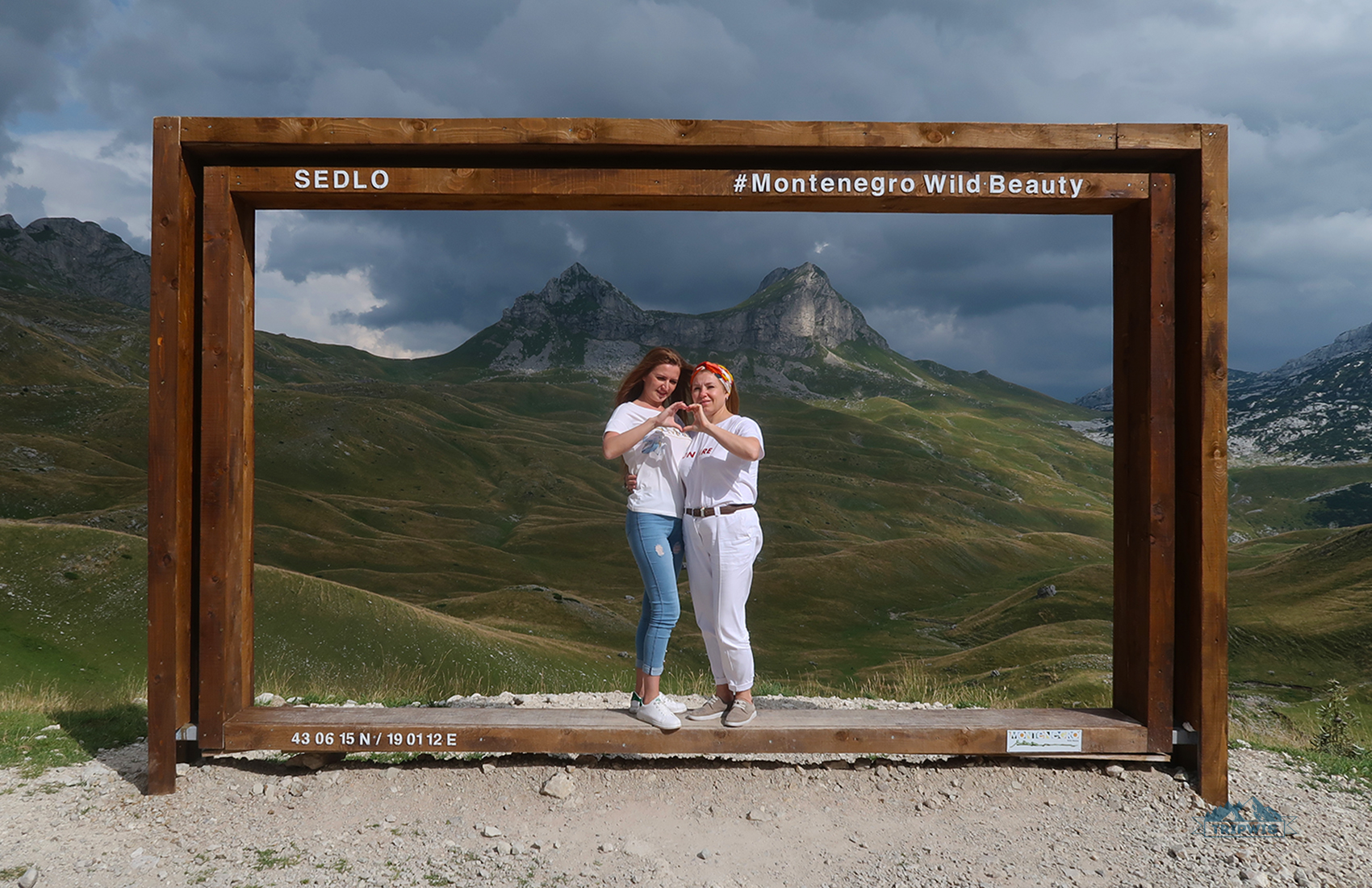
- How much does it cost to rent a car in Montenegro?
It’s not hard to find a cheap car rental in Montenegro. You can get a basic compact car for as low as €20–€30 per day and a fancy BMW cabrio for €90. Most decent cars are within the €50–€70 price range, though. You’ll find the best prices on Localrent.com.
- What do I need to rent a car in Montenegro?
You need your driving license (International, aka IDP) and your ID. If you have a minimum driving experience of 2 years and you’re 21+ years old — it’s great, but you can negotiate with the rental company even if you don’t fit these criteria. Chances are, you’ll work out a solution and they’ll just increase the price a bit.
- How old do I need to be to rent a car in Montenegro?
Most rental companies state that you have to be at least 21. It’s not a strict limitation, though, and they’ll just charge extra if you’re younger than the limit. If your company refuses to let you behind the wheel, try one or two alternative companies: You’ll find someone willing to go for it.
- Do I need an international driver’s license to rent a car in Montenegro?
Yup, you do. US-issued, Canadian, EU, and basically any license that has info written in the Latin alphabet will do. The only place where you might get issues with your driving license is the border, since generally the police barely care about it. They’ll pay more attention to the way you drive and whether you break any traffic laws.
- What type of insurance is included in the rental car agreement in Montenegro?
You get TPL (third party liability) by default, included in the price. It’s mandatory for all cars in Montenegro to have it. In addition, you can go for CDW or Super CDW.
- What is the fuel policy for rental cars in Montenegro?
You’re expected to return the car with the same gas level as you received it, or more. Keep in mind that nobody will compensate for the fuel price if you return the car with more gas than you got from the start, but they’ll withhold some of the deposit if you return the car with less.
- What’s the mileage limit on rental cars in Montenegro?
Unless you rent from a major international company (say, Avis), there’s no mileage limit. It’s just not a thing here.
- Can I pick up my car in Tivat and drop it off in Budva?
Yes, with most rental companies — you can. Budva and Tivat are about 30 minutes away from each other, and it’s a popular option.
- Can you rent a car in Montenegro and drive to Albania? Or Bosnia? Or Croatia?
Technically, you can. Just notify your rental company that you plan to leave the territory of Montenegro. You’ll have to pay a bit extra for the green card insurance and cross-border fee, though.
Also, you’ll obviously need a visa if your country of residence has no visa-free agreements with Bosnia or Albania. And you’ll have to look for a rental company that allows drop-off in a different country. The last point might not be so easy.
- How to get around in Montenegro without a car?
It’s complicated. You’ll have to rely on buses (which are unpredictable) and taxis (which are overpriced). Alternatively, you can look for the organized tours.
Getyourguide has a few options that don’t look too shabby for exploring Montenegro without a car:
🔹This beautiful day trip to Montenegro’s gorgeous natural landscapes (that ends with a visit to the charming Ostrog Monastery),
🔹And a full-day tour to the Lovcen National Park are acceptable choices if you’re not renting a car in Montenegro.
- Does it matter where you rent a car in Montenegro?
No, it really doesn’t. The price range is the same if you rent a car at Podgorica airport or if you do in Budva on the coast. Options are the same, the cars are the same, the services are the same — Localrent or Economybookings — and there’s no real difference.
- How crazy are local drivers, really?
Some are OK, some are beyond the point of no return. Especially bikers and the “my truck is bigger than yours” crowd. However, if you’d ask “Is it easy to drive a car in Montenegro?”, I’d still say that it’s exceptionally easy.
All the craziest drivers will treat you merely as an obstacle they have to overtake, and if you prefer calm and relaxed driving — just let them do it, and they’ll soon be so far ahead you won’t even have to worry about them.
- Do you need a GPS to drive in Montenegro?
Google Maps will do, you don’t really need any special local map. Maps.me is a great option as well. I use the basic Google maps app and never had any issues.
Final thoughts
We hope that we’ve managed to sell you on the idea of renting a car in Montenegro — after all, we stand by the fact that it’s one of the best decisions you could make when planning your trip here. The number of gorgeous locations we were able to see firsthand without having to worry about public transport’s timetables and weather conditions is vast, and the amount of nerve cells saved is priceless, — you can witness our happy faces in the many pics we’ve taken in Montenegro.
If you have any further questions on the topic of renting a car in Montenegro (or if you want to share your personal experiences), feel free to leave them in the comments down below! Other than that, consider consulting our list of essential things to know before visiting Montenegro and then hitting the road — you’re in for a wild ride!
